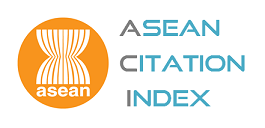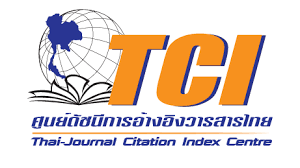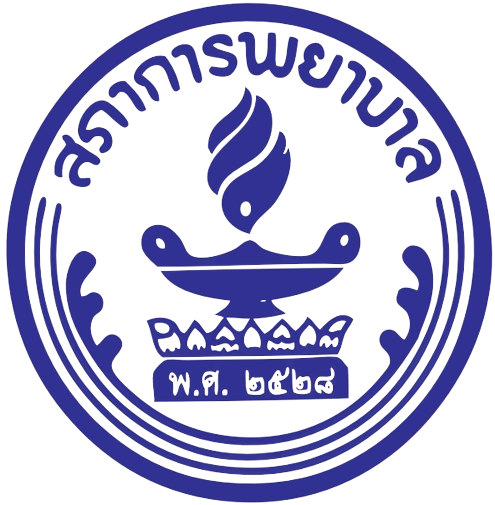Factors Associated with Breastfeeding Intention among Late Adolescent Female Students
DOI:
https://doi.org/10.60099/jtnmc.v40i02.272479Keywords:
attitudes, breastfeeding intention, knowledge, perceived behavioral control, subjective norms, Theory of Planned BehaviorAbstract
Introduction Breast milk contains essential nutrients, including proteins, carbohydrates, fats, vitamins, and minerals. Breastfeeding benefits both mothers and infants by enhancing the immune system and reducing respiratory and gastrointestinal infections. However, the breastfeeding rates among adolescent mothers worldwide and in Thailand remain low. As adolescents transition to adulthood, it is crucial to promote breastfeeding intention before pregnancy, particularly among late school-aged students in vocational education. Previous studies have shown that breastfeeding knowledge, attitudes toward breastfeeding, subjective norms, and perceived behavioral control are associated with breastfeeding intention. However. studies are limited in late adolescent female students in vocational education.
Objective This research aimed to 1) study the intention to breastfeed and 2) investigate factors associated with breastfeeding intention, including breastfeeding knowledge, attitudes toward breastfeeding, subjective norms about breastfeeding, and perceived breastfeeding behavioral control among late adolescent female students in vocational education.
Design A descriptive correlational design. This study utilized the Theory of Planned Behavior (TPB) by Ajzen, which explains that a person’s intention is related to their attitudes toward breastfeeding behavior, subjective norms about breastfeeding behavior, perceived behavioral control over breastfeeding, and breastfeeding knowledge, which is a background factor associated with breastfeeding intention.
Methodology The participants included late adolescent students aged 17-19 years who were studying in the third year of vocational program and the first and second year of higher vocational program under the Vocational Education Commission in Bangkok from May to June 2024. The sample size was calculated using the G*Power program. The effect size was set at 0.184, the power of the test was .95 and the level of significance was .05, obtaining 311 participants. The researchers added 10% to account for data incompletion, resulting in a total of 342 participants. The research instruments consisted of 6 parts, including 1) a personnel information questionnaire, 2) breastfeeding knowledge questionnaire, 3) attitudes toward breastfeeding questionnaire, 4) subjective norm about breastfeeding questionnaire, 5) perceived behavioral control questionnaire, and 6) breastfeeding intention questionnaire. In this study, the content validity indices of the breastfeeding knowledge questionnaire, attitudes toward breastfeeding questionnaire, subjective norms about breastfeeding questionnaire, perceived breastfeeding behavioral control questionnaire, and breastfeeding intention questionnaire were .96, 1, .80, .96, and 1 respectively. The reliability, Kuder-Richardson 20 for the breastfeeding knowledge questionnaire was .72. The attitudes toward breastfeeding questionnaire, subjective norms about breastfeeding questionnaire, and perceived breastfeeding behavioral control questionnaire had Cronbach’s alpha coefficient of .74, .86, and .93, respectively. Data were collected using self administration, from May to June 2024. Data were then analyzed using descriptive statistics and Pearson’s product moment correlation coefficient.
Results Among 342, 332 participants met the criteria in this study. The average age of the participants was 18.27 years old (SD = 0.69). Most of them lived with their parents (78.31%). The family income of 10,001-20,000 baht/month was the highest frequency (34.6%). The results showed that breastfeeding intention was high. It was significantly associated with breastfeeding knowledge (r = .172, p = .002), attitudes toward breastfeeding (r = .190, p < .001), subjective norm about breastfeeding (r = .389, p < .001), and perceived breastfeeding behavioral control (r = .429, p < .001).
Recommendation This study provides preliminary data for nurses to plan the promotion of breastfeeding knowledge, attitudes toward breastfeeding, subjective norms about breastfeeding, and perceived breastfeeding behavioral control. These efforts will contribute to increasing breastfeeding rates in the future.
Downloads
References
Christensen N, Bruun S, Søndergaard J, Christesen HT, Fisker N, Zachariassen G, et al. Breastfeeding and infections in early childhood: A cohort study. Pediatrics 2020;146:1-9. https://doi.org/10.1542/peds.2019-1892 PMID: 33097658
Sabino JS, Amorim MR, de Souza WM, Marega LF, Mofatto LS, Toledo-Teixeira DA, et al. Clearance of persistent SARS-CoV-2 RNA detection in a NFκB-Deficient patient in association with the ingestion of human breast milk: a case report. Viruses 2022;14:1-10. https://doi.org/10.3390/v14051042 PMID: 35632784
Le Doare K, Holder B, Bassett A, Pannaraj PS. Mother’s milk: a purposeful contribution to the development of the infant microbiota and immunity. Front Immunol 2018;9:1-10. https://doi.org/10.3389/fimmu.2018.00361 PMID: 29599768
Babic A, Sasamoto N, Rosner BA, Tworoger SS, Jordan SJ, Risch HA, et al. Association between breastfeeding and ovarian cancer risk. JAMA oncol 2020;6,1-8. https://doi.org/10.1001/jamaoncol.2020.0421 PMID: 32239218
Unar-Munguía M, Torres-Mejía G, Colchero MA, González de Cosío T. Breastfeeding mode and risk of breast cancer: a dose–response meta-analysis. J Hum Lact 2017;33:422-34. https://doi.org/10.1177/0890334416683676 PMID: 28196329
Teles MC, Cardoso SD, Oliveira RF. Social plasticity relies on different neuroplasticity mechanisms across the brain social decision-making network in Zebrafish. Front behav neurosci 2016;10:1-12. https://doi.org/10.3389/fnbeh.2016.00016 PMID: 26909029
World Health Organization. Infant and young child feeding [homepage on Internet]; 2023 Dec 20 [cited 2025 Mar 16]. Available from: https://www.who.int/news-room/fact-sheets/detail/infantand-young-child-feeding
Bureau of Reproductive Health, Department of Health, Ministry of Public Health. Statistics on Adolescent Births, Thailand 2022 [homepage on the Internet]; 2022 [cited 2025 Mar 17]. Available from: https://rh.anamai.moph.go.th/web-upload/7x027006c2abe84e89b5c85b44a692da94/m_magazine/35430/4729/file_download/8ef9ce93951bc46134d960dd8c0106ed.pdf
Thaithae S, Yimyam S, Polprasarn P. Prevalence and predictive factors for exclusive breastfeeding at six months among Thai adolescent mothers. Children (Basel). 2023;10(4):1-12. https://doi.org/10.3390/children10040682 PMID: 37189931
Supasiripenpong K. Factors effecting continuing breastfeeding of adolescent mothers at Suratthani hospital. Reg 11 med 2018;32(1):853-62. Available from: https://he02.tci-thaijo.org/index.php/Reg11MedJ/article/view/155366 (in Thai)
World Health Organization. Adolescent birth rate (per 1,000 females aged 15-19 years) [homepage on Internet]; 2024 March 26 [cited 2025 Mar 16]. Available from: https://data.who.int/indicators/i/24C65FE/27D371A
Bureau of Reproductive Health, Department of Health. Teenage pregnancy surveillance report Thailand 2021 [homepage on Internet]; 2021[cited 2025 Mar 17]. Available from: https://rh.anamai.moph.go.th/web-upload/7x027006c2abe84e89b5c85b44a692da94/m_magazine/35435/3331/file_download/d618f313b0007cf9244f16418e60f6dd.pdf
Dengmasa S, Chaimay B, Woradet S. Sexual risk behaviors among vocational students in district of the south central region province. AJCPH 2019;5:14-28. Available from: https://he02.tci-thaijo.org/index.php/ajcph/issue/view/16740/3975 (in Thai)
Ketumarn P. Adolescent behavior problems. [monograph on the Internet]; 2007 [cited 2024 Oct 1]. Available from: http://www.psyclin.co.th/new_page_56.htm
Pérez MCH, Díaz-Gómez NM, Manzano AMR, Gómez JMD, Pérez VR, Sosa AJ. Effectiveness of an intervention to improve breastfeeding knowledge and attitudes among adolescents. Rev esp salud public 2018;92:1-12. Available from: https://pubmed.ncbi.nlm.nih.gov/29911663/ PMID: 29911663
Ho Y, McGrath J. Effectiveness of a breastfeeding intervention on knowledge and attitudes among high school students in Taiwan. J Obst Gyn Neo 2016;45: 71-7. https://doi.org/10.1016/j.jogn.2015.10.009 PMID: 26815800
Chansiri S, Phahuwatanakorn W, Yusamran C. Influences of breastfeeding attitude, subjective norm, and self-efficacy on intention to exclusive breastfeeding among teenage pregnant women. Nurs Sci J Thail 2017;35(4):49-60. Available from: https://he02.tci-thaijo.org/index.php/ns/article/view/116181 (in Thai)
Moukarzel S, Jaoudeh MA, Farhat A, Saade M, Mamas C, Daly A. Exploring the latitude of attitude: intentions to breastfeed among adolescents in Lebanese schools. 1. Christensen N, Bruun S, Søndergaard J, Christesen HT, Fisker N, Zachariassen G, et al. Breastfeeding and infections in early childhood: A cohort study. Pediatrics 2020;146:1-9. https://doi.org/10.1542/peds.2019-1892 PMID: 33097658 PMID: 314 86280
Reyes C, Barakat-Haddad C, Barber W, Abbass-Dick J. Investigating the effectiveness of school-based breastfeeding education on breastfeeding knowledge, attitudes and intentions of adolescent. Midwifery 2019;70:64-70. https://doi.org/10.1016/j.midw.2018.12.010 PMID: 30580074
Čatipović M, Marković M, Grgurić J. Effects of a breastfeeding educational intervention on secondary school students after 6 months. Acta Clin Croat 2021;60:569-78. https://doi.org/10.20471/acc.2021.60.04.02 PMID: 35734500
Angsirisak N, Jirakunjana T, Arunyaphark P, Parai W. Knowledge attitude concept and factor about breastfeeding in Sripradu teenagers. in: report of the national academic conference in 2017, Association of Private Higher Education Institutions of Thailand; 2017 May 25; Rattana Bundit University. Bangkok: 2017. 905-15. https://e-library.siam.edu/e-journal/wp-content/uploads/2019/01/ProceedingAPHEIT2017-905-915.pdf (in Thai)
Fishbein M, Ajzen I. Predicting and changing behavior: The reasoned action approach. New York: Taylor and Francis Group; 2010.
Hamade H, Naja F, Keyrouz S, Hwalla N, Karam J, Al-Rustom L, et al. Breastfeeding knowledge, attitude, perceived behavior, and intention among female undergraduate university students in the Middle East: the case of Lebanon and Syria. Food Nutr Bull 2014; 35:179-90. https://doi.org/10.1177/1564826 51403500204 PMID: 25076765
Chainok L. Factors influencing breast feeding behaviors of postpartum adolescent mothers in Maharat Nakhonratchasima hospital [Thesis]. Nakhonratchasima: Suranaree University of Technology; 2015. (in Thai)
Bloom BS, Madaus GF, Hastings JT. Handbook on formative and summative evaluation of student learning. New York:McGraw-Hill;1986.
Giles M, McClenahan C, Armour C, Millar S, Rae Gordon, Mallett J, et.al. Evaluation of a theory of planned behaviour - based breastfeeding intervention in Northern Irish school using a randomized cluster design. Br J Health Psychol 2014;19:16-35. https://doi.org/10.1111/bjhp.12024 PMID: 23350961
Oberoi S, Kishore K, Rai SK, Patnaik S. Are adolescents ready for future responsibilities? experience from a cross-sectional study regarding breastfeeding knowledge and attitude. J Family Med Prim Care 2019;8:1621-5. https://doi.org/10.4103/jfmpc.jfmpc_192_19 PMID: 31198726
Khoonphet C, Kala S. The experience of breastfeeding intention among adolescent mothers. PNUJR 2019; 11(2):1-11. Available from: https://li01.tci-thaijo.org/index.php/pnujr/article/view/123175 (in Thai)
Downloads
Published
How to Cite
Issue
Section
License
Copyright (c) 2025 Journal of Thailand Nursing and Midwifery Council

This work is licensed under a Creative Commons Attribution-NonCommercial-NoDerivatives 4.0 International License.








